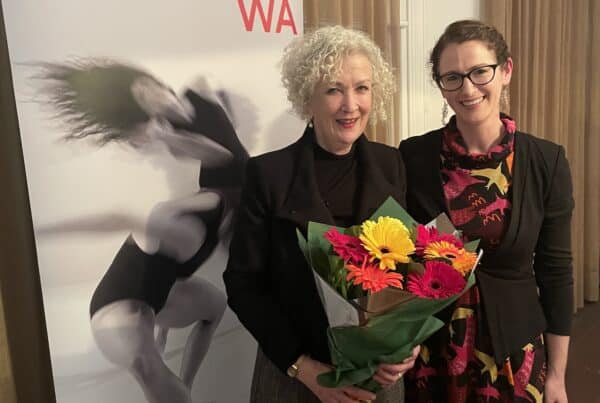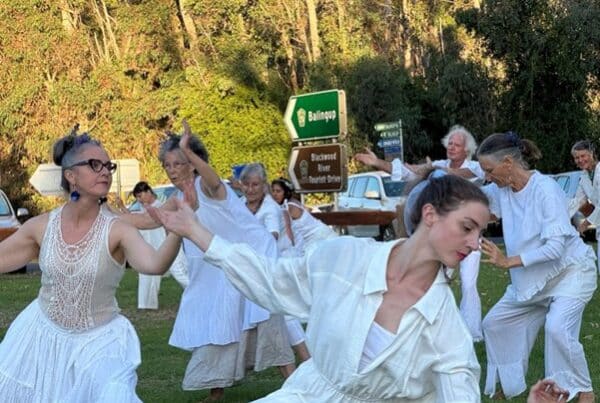Report from Amy Wiseman
[/et_pb_fullwidth_header][/et_pb_section][et_pb_section bb_built=”1″ _builder_version=”3.0.47″ prev_background_color=”#000000″][et_pb_row custom_padding=”53px|0px|0px|0px|false|false” _builder_version=”3.0.48″ background_size=”initial” background_position=”top_left” background_repeat=”repeat”][et_pb_column type=”4_4″][et_pb_image src=”https://www.ausdancewa.org.au/wp-content/uploads/Panpapanpalya.jpg” _builder_version=”3.18.2″ max_width=”80%” max_width_last_edited=”on|desktop” module_alignment=”center” custom_padding=”||20px” custom_padding_last_edited=”on|phone”] [/et_pb_image][et_pb_text _builder_version=”3.18.2″ background_size=”initial” background_position=”top_left” background_repeat=”repeat”]Former Ausdance WA Projects Manager Amy Wiseman attended Panpapanpalya on behalf of Ausdance WA. Amy has completed this fantastic report on her experience at the conference. We thought it was better late than never to share this report on what was such an important event for the Australian dance community.
Panpapanpalya 2018 was the second joint dance congress of both Dance and the Child International (daCi) and World Dance Alliance (WDA) Global Education and Training Network, held in Adelaide from 8 -13 July.
The Aboriginal Kaurna word ‘Panpapanpalya’ summarises the four interwoven themes of the congress: dance, gathering, generations and learning. The congress was full-to-bursting with offerings and engaged over 900 participants and presenters from diverse backgrounds and from all over the world. Set between the University of South Australia’s City West campus and Adelaide College of the Arts, which were only a short walk apart, the week boasted: practical classes and workshops; keynote presentations; creative gatherings, where new intergenerational works were created and performed; young people gatherings; scholarly gatherings presenting research papers, panel discussions and lecture demonstrations; ‘Twinning’ sessions that paired groups together for exchange from across the globe; breakout forums; live performances including the Adelaide Dance Festival, and many rich conversations over a hot beverage!
My initial reaction upon wading through the huge program was to wish that I could take a leaf out of Voldemort’s book and split myself into seven… as even the scholarly gatherings alone had at least seven sessions running concurrently. Luckily there were many familiar faces to discuss the content of the sessions with afterwards and all venues were close enough together that you could pop in and out. With the scale of the week in mind, I have asked three fellow West Australian dance artists who attended, to share their experiences in order to gain a greater sense of the spectrum on offer.
Rachael Bott from Creative Moves WA presented her own workshop during the congress and agreed it was difficult to pick just one highlight.
I was particularly excited by three different presentations/workshops I attended that focused on dance integration in schools. Heather Francis from Utah shared activities from a unit of year 8 Mathematics she taught using dance, Juliette O’Brien from Hong Kong shared tasks and findings from a course she developed that used music and dance to teach year 9 History, and Chara Huckins from Utah led a workshop using dance to explore sentence construction for primary school students. All three of these presenters inspired me to continue developing the work I have been doing over the last few years, gave me new ideas to try in my own practise and affirmed that what I am doing is valuable in terms of the impact on student learning. I was really pleased to find a focus at the congress on discussing dance teaching and pedagogy. It made me realise that there is far too little time and knowledge invested in the art of teaching dance in Western Australia. We have such a strong focus on training dancers and dance makers, but I feel there is not enough focus on developing good quality teachers as well – particularly with the absence of a tertiary pathway directly into dance teaching and a lack of regulation of private dance studios. I would like to explore the options for changing this paradigm…
Camille Spencer, independent artist and teacher with the Dance for Parkinson’s program in WA also found many areas that have inspired her practice.
Participating in the 2018 conference provided me with many connections along with new ideas and creative practices and I most enjoyed the workshop aspect of the conference. This environment provided an opportunity for us as participants to experience the practice of the presenter as well as conduct our own research according to what we each were experiencing. One of my favourite workshops was led by Andrew Morrish who shared with the participants an improvisation practice as a way of doing experimental research.
A strong focus overall that surprised me was the predominant respect and passion that was presented for the Australian culture and Indigenous history throughout the conference. Not only for Australian culture, but the natural cultural aspects that were present by having both international and intergenerational participants from around the world.
McKenzie Goldsmith, secondary dance and drama teacher and freelance mover and creator at good moves, also found many of the dance pedagogy sessions valuable.
Astand out session for me was from Laura Navndrup Black – a dancer, researcher and choreographer from Denmark who explained her focus‘The child is present – the child as choreographer and choreographic material’. The initial research question aligned with our own as teachers, i.e. What do I want from the child? In a secondary school setting I want learning, creation, exploration, collaboration and a meaningful physical experience as both performers and audience members. Black’s work has inspired new thoughts around making movement that shifts away from task-based work, to instead constructing spaces where students need to solve physical problems through an embodied experience. This will become the main body of her research, but importantly at this stage she has established that it’s a space where no one knows more than anyone else. The adult or teacher does not have “an advantage” and instead becomes a facilitator or guide for a physical experience. Also interestingly, the expressive or dance-literate body is not called for and instead participants are problem solving, collaborating and exploring movement. It prompted a lot of thoughts but mainly about what this means for our students, especially in terms of allowing greater access and inclusion in our dance classrooms, which can often alienate those without certain technical and physical abilities.
For me, a personal highlight, though there were many, were the morning keynote presentations. On some days this brought the entire congress together and you could really get a sense of the diversity of age and background, and an appreciation for the knowledge in the room. On the first morning, David McAllister AM, Artistic Director of The Australian Ballet gave a considered summary of the post-colonial history of dance in Australia, while acknowledging the foundations of dance in our country from thousands of years ago. It captured the challenges of shaping a national identity, the importance of dance in education as kinetic learning, and the melting pot of cultural influence from folkloric to Asian and African dance that weave a varied history through our cultural experience. It was a wonderful place to begin the week, and to share a context with international guests, and was particularly pertinent for me, having just discussed some of these threads with first year dance history students!
I also felt privileged to speak alongside marvelous colleagues Erica Rose Jeffrey, Philip Piggin and Katrina Rank in a panel discussion about the Dance for Parkinson’s program, which continues to grow nationally and internationally, and become a greater focus in a globally ageing population.
As is inevitable at any industry gathering, the conversations and get-togethers held outside the formal proceedings were just as valuable and replenishing, and it was a buzz to have so many dance idols, mentors, colleagues and friends in one place. With performances selling out and evening showings at capacity, there was a sense that perhaps attendance at Panpapanpalyasurpassed even the organisers’ expectations. I came away from the experience feeling that dance research, both embodied and academic, is alive and kicking.
Thank you Amy for reporting to us on your experience!
[/et_pb_text][et_pb_button button_text=”Return to Ausdance WA Newsfeed” button_alignment=”left” _builder_version=”3.18.2″ custom_button=”on” button_icon=”%%23%%” button_icon_placement=”left” button_url=”https://www.ausdancewa.org.au/about/blog/”] [/et_pb_button][/et_pb_column][/et_pb_row][/et_pb_section]




